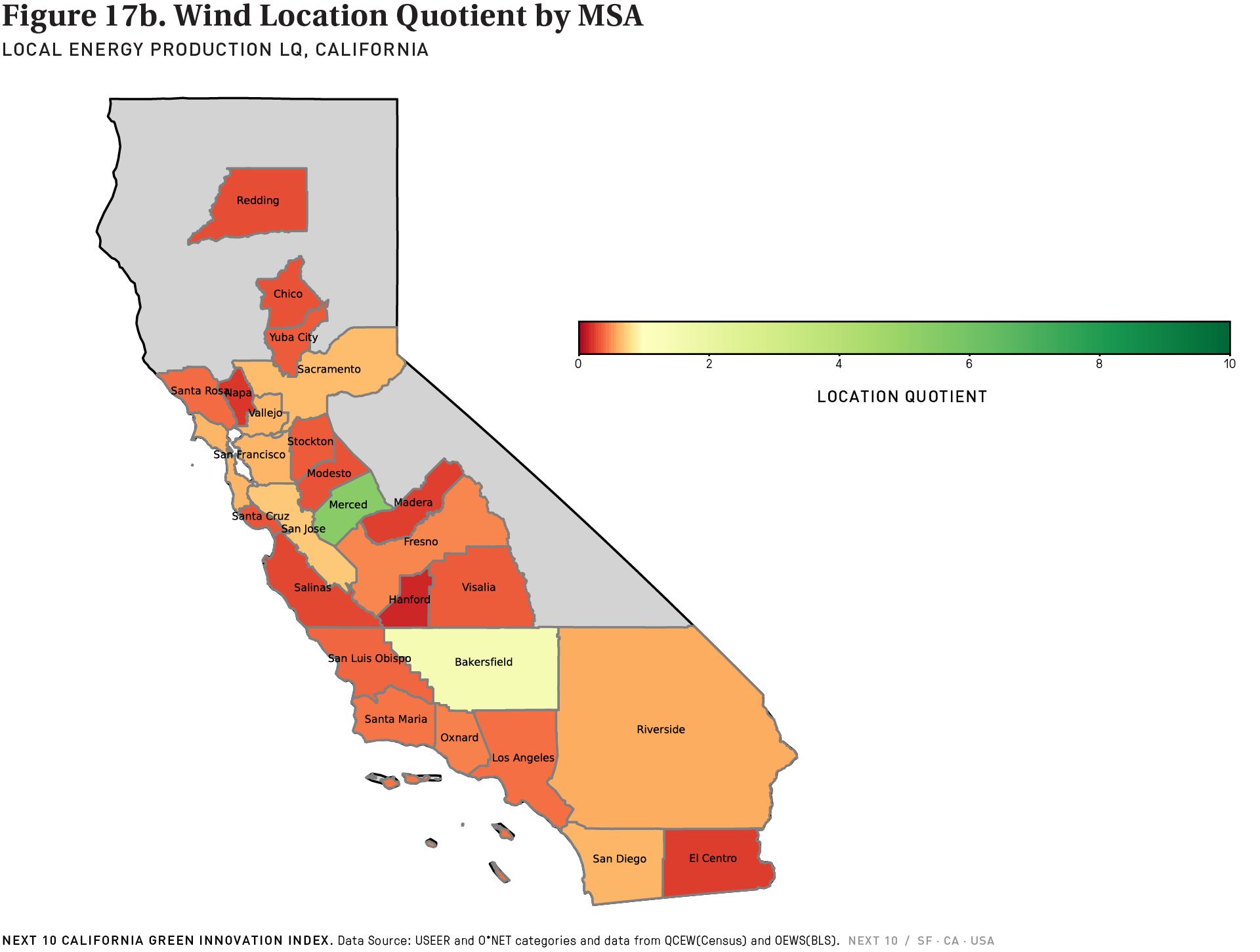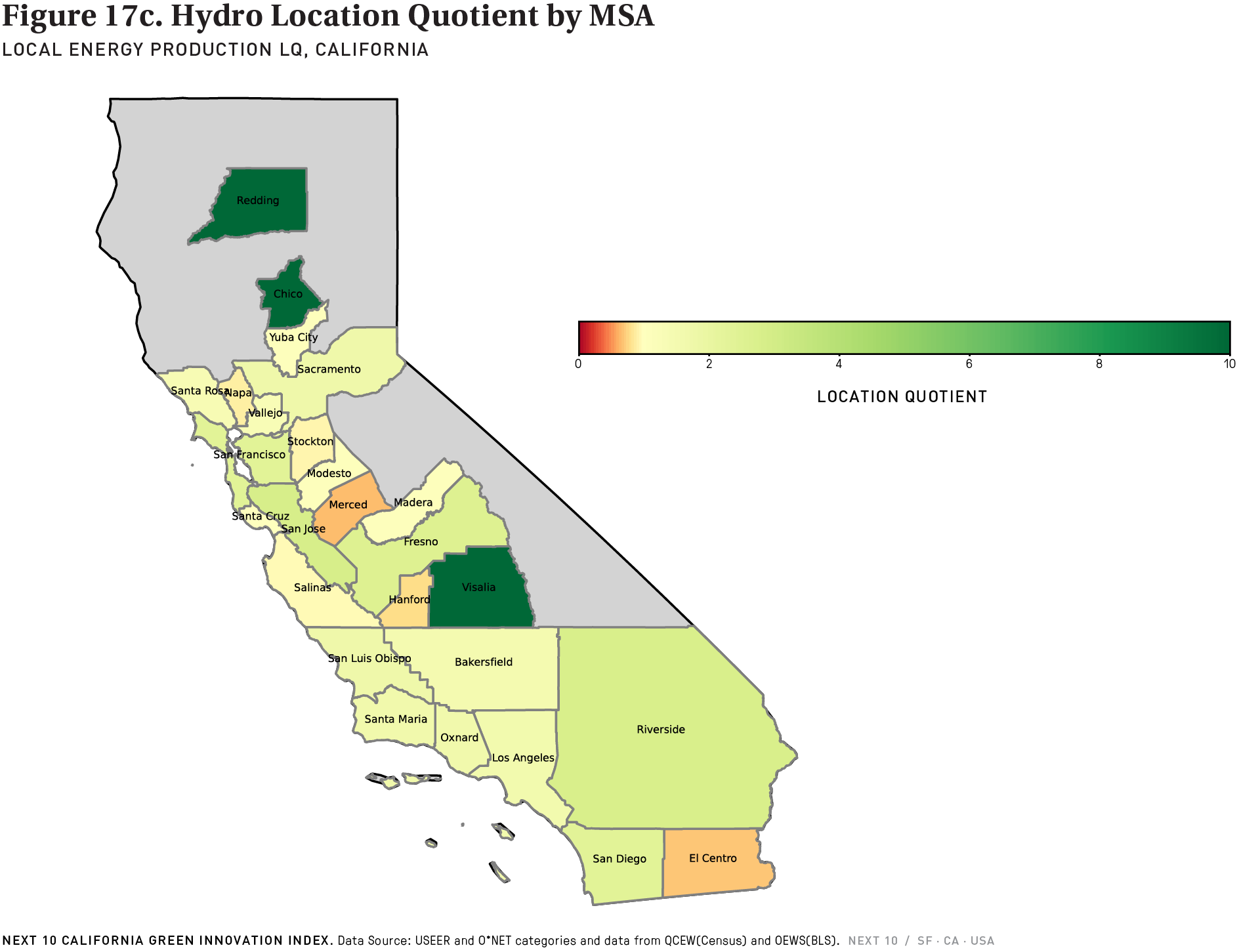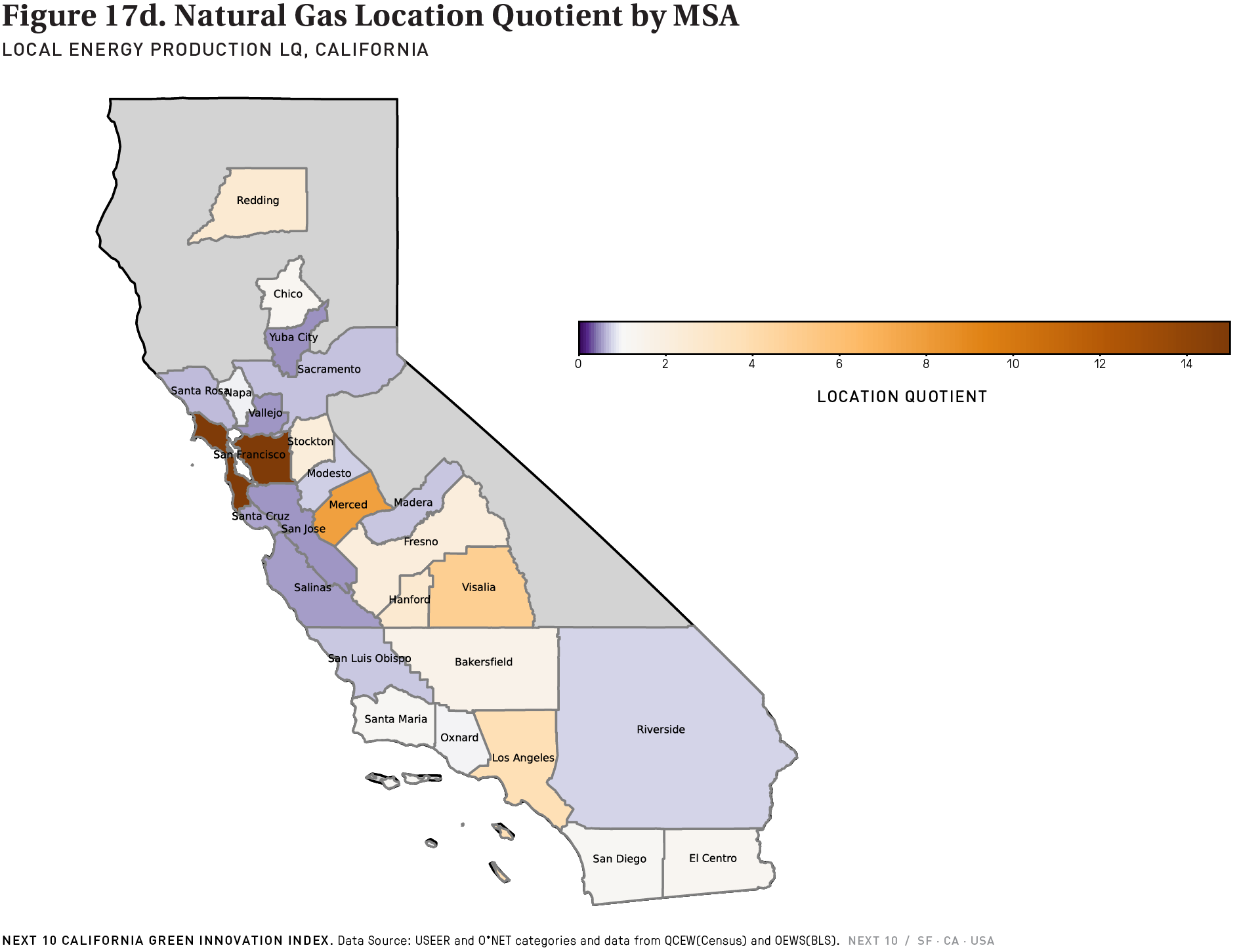Highlights
- Only Merced and Bakersfield appear to be specialized in wind power generation—but not because there is strong employment in these areas in absolute terms.31 Merced’s 157 wind power workers, mostly associated with its Dinosaur Point Facility, are only large relative to its smaller overall workforce. Bakersfield only has 190 wind power workers. Traditional hydroelectric power has a greater level of specialization throughout the state, with 13 regions appearing to specialize in its generation. This can almost entirely be explained by where traditional hydroelectric facilities are: Redding has 38 facilities producing 1900 MW, including the Kewsick and Shasta Dams; Chico has 12 facilities (900 MW); and Visalia produces 66 MW at five facilities—a large number of jobs, relative to their size.
- In comparison to renewable resources, there are six regions that specialize in natural gas production. Again, these tend to follow the geography of facilities—e.g., PG&E’s natural gas facility at Red Bluff.32 San Francisco’s very high natural gas LQ reflects the fact that PG&E is based there, as well as the state regulator California Public Utilities Commission.
31 Both San Luis Obispo (Morro Bay) and Eureka (Humboldt Bay) could see employment growth in the near future if proposed wind generation projects go ahead.
32 Red Bluff Generation Information. Pure Energy. Available at: https://www.purenergyllc.com/projects/redbluff/#page-content
Opportunity
- While the state currently has a relatively small specialization in wind power generation employment, a recent announcement from the federal government indicates that California could expect a significant increase in wind power employment in the coming years. The Biden administration announced this year a goal to develop 30 GW of offshore wind nationally by 2030, and identified two project sites in California for development (Morro Bay and Humboldt) that could provide up to 4.6G W by 2030.33 NREL analysis of wind energy development-related jobs at viable sites throughout the state (which could produce up to 16 GW by 2050) estimates the potential for jobs created to be approximately 3,000 to 10,000 per year in the 2030 to 2040 development phase and nearly 9,000 to over 20,000 jobs per year in 2040-2050.34 If the two sites that have been selected for environmental review (Morro Bay and Humboldt Bay)35 are developed, these projects will greatly increase the density of green jobs in these areas from their currently low levels. Morro Bay is projected to bring 617 permanent jobs to San Luis Obispo County and 481 to the rest of the state. The construction of that project is expected to create $3.7 billion in economic value for the state, the equivalent of 11,368 jobs.36
33 Fact Sheet: Biden Administration Opens Pacific Coast to New Jobs and Clean Energy Production with Offshore Wind Development. May 25, 2021. Available at: https://www.whitehouse.gov/briefing-room/statements-releases/2021/05/25/fact-sheet-biden-administration-opens-pacific-coast-to-new-jobs-and-clean-energy-production-with-offshore-wind-development/
34 “Floating Offshore Wind in California: Gross Potential for Jobs and Economic Impacts from Two Future Scenarios”
Available at: https://www.boem.gov/sites/default/files/environmental-stewardship/Environmental-Studies/Pacific-Region/Studies/BOEM-2016-029.pdf
35 “BOEM Advances Offshore Wind Leasing Process in California.” Bureau of Ocean Energy Management. July 28, 2021. Available at: https://www.boem.gov/newsroom/press-releases/boem-advances-offshore-wind-leasing-process-california
36 “Economic Impact of Offshore Wind Farm Development on Central Coast”, Reach California Polytechnic University, April 3rd, 2021 Available at: https://reachcentralcoast.org/wp-content/uploads/Economic_Value_OSW_REACH.pdf



